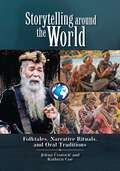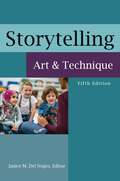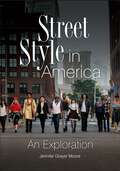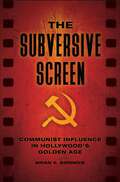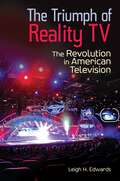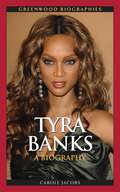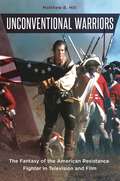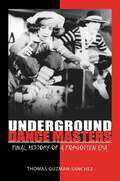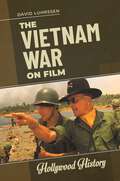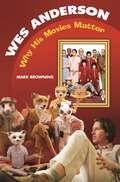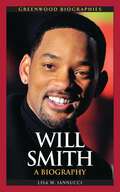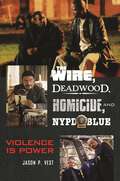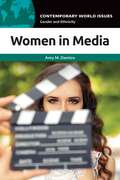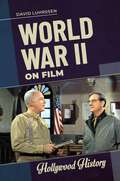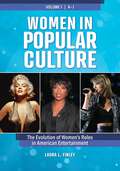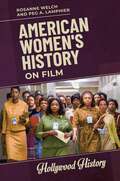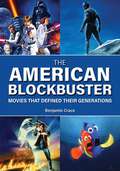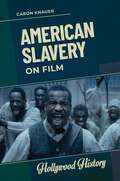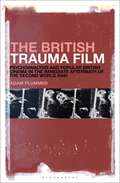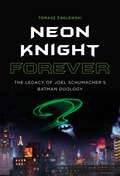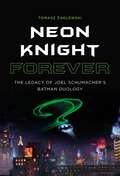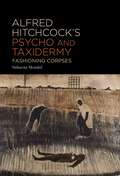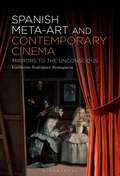- Table View
- List View
Storytelling around the World: Folktales, Narrative Rituals, and Oral Traditions
by Jelena Cvorovic Kathryn CoeThis book provides students, instructors, and lay-readers with a cross-cultural understanding of storytelling as an art form that has existed for centuries, from the first spoken and sung stories to those that are drawn and performed today.This book serves as an indispensable resource for students and scholars interested in storytelling and in multicultural approaches to the arts. By taking an evolutionary approach, this book begins with a discussion of origin stories and continues through history to stories of the 21st century. The text not only engages the stories themselves, it also explains how individuals from all disciplines, from doctors and lawyers to priests and journalists, use stories to focus their readers' and listeners' attention and influence them.This text addresses stories and storytelling across both time (thousands of years) and geography, including in-depth descriptions of storytelling practices occurring in more than 40 different cultures around the world. Part I consists of thematic essays, exploring such topics as the history of storytelling, common elements across cultures, different media, lessons stories teach us, and storytelling today. Part II looks at more than 40 different cultures, with entries following the same outline: Overview, Storytellers: Who Tell the Stories, and When, Creation Mythologies, Teaching Tales and Values, and Cultural Preservation. Several tales/tale excerpts accompany each entry.
Storytelling: Art and Technique
by Janice M. Del NegroThis book serves as both a textbook and reference for faculty and students in LIS courses on storytelling and a professional guide for practicing librarians, particularly youth services librarians in public and school libraries.Storytelling: Art and Technique serves professors, students, and practitioners alike as a textbook, reference, and professional guide. It provides practical instruction and concrete examples of how to use the power of story to build literacy and presentation skills, as well as to create community in those same educational spaces.This text illustrates the value of storytelling, covers the history of storytelling in libraries, and offers valuable guidance for bringing stories to contemporary listeners, with detailed instructions on the selection, preparation, and presentation of stories. It also provides guidance around the planning and administration of a storytelling program. Topics include digital storytelling, open mics and slams, and the neuroscience of storytelling. An extensive and helpful section of resources for the storyteller is included in an expanded Part V of this edition.
Street Style in America: An Exploration
by Dr Jennifer Grayer MooreA comprehensive resource that will prove invaluable to fashion historians, this book presents a detailed exploration of the breadth of visually arresting, consumer-driven styles that have emerged in America since the 20th century.What are the origins of highly specific denim fashions, such as bell bottoms, skinny jeans, and ripped jeans? How do mass media and popular culture influence today's street fashion? When did American fashion sensibilities shift from conformity as an ideal to youth-oriented standards where clothing could boldly express independence and self-expression? Street Style in America: An Exploration addresses questions like these and many others related to the historical and sociocultural context of street style, supplying both A–Z entries that document specific American street styles and illustrations with accompanying commentary.This book provides a detailed analysis of American street and subcultural styles, from the earliest example reaching back to the early 20th century to contemporary times. It reviews all aspects of dress that were part of a look, considering variations over time and connecting these innovations to fashionable dress practices that emerged in the wakes of these sartorial rebellions. The text presents detailed examinations of specific dress styles and also interrogates the manifold meanings of dress practices that break from the mainstream. This book is a comprehensive resource that will prove invaluable to fashion historians and provide fascinating reading for students and general audiences.
The Subversive Screen: Communist Influence in Hollywood's Golden Age
by Brian E. BirdnowA riveting chronicle of Communist Party efforts to propagate Communism in the United States, concurrent with Hollywood's "Golden Age" of creativity that came to define classical Hollywood cinema.From the Great Depression through World War II, the American Communist Party tried to take control of the motion picture industry. This comprehensive and chronological account of Communist influence in Hollywood surveys the topic from the Popular Front's fight against Fascism during the 1930s to the height of the House Un-American Activities Committee hearings in the late 1940s.Birdnow, an established historian and chronicler of domestic Communism, outlines Communist International's organizational efforts promoting international communism, focusing on the work of Communist political activists such as Willi Münzenberg, a media mogul with an international network; Gerhart Eisler, patron of a Hollywood composer; and Otto Katz, a high-profile publicist of the party line involved in movies in the 1930s and 1940s. The book explores the covert ways in which Hollywood Communists and Soviet sympathizers attempted to tailor movie scripts to suit the Soviet agenda and discusses Communist front groups such as the Hollywood Anti-Nazi League in great detail. Final chapters offer convincing proof that the directors, producers, and screenwriters blacklisted by studios for their possible Communist affiliations, known as the Hollywood Ten, were members of the Communist Party.
The Triumph of Reality TV: The Revolution in American Television
by Leigh H. EdwardsThis book provides an up-to-date account of how reality TV has developed, why it has become the most popular genre on television today, and how the explosion in reality TV signals new developments in American media culture.The reasons behind reality TV's continued popularity go beyond the sensationalism and low production cost of these programs: there is much more to the genre's continued success than just escapism or "guilty pleasure" TV. The Triumph of Reality TV: The Revolution in American Television identifies and explores five key media trends reality TV has used to continually draw in viewers and ensure success. These media trends include innovations in storytelling, making emotional appeals to viewers, and applying content from television to other media such as films, music albums, webisodes, online games, and smart phone apps. Author Leigh H. Edwards also analyzes how reality TV shows target themes of social conflict, such as changing ideas of the American family, and address common anxieties and tensions in American society such as gender, race, class, and economic struggle. A wide variety of reality shows—including American Idol, Celebrity Rehab, Jackass, Run's House, Survivor, and The Hills—are profiled. An appealing read for students, scholars, and general readers alike, this book provides fascinating insights into the complexities of a seemingly simplistic form of mass entertainment.
Tyra Banks: A Biography (Greenwood Biographies)
by Carole JacobsThis book chronicles the fascinating life story of the supermodel turned media mogul who has become one of the most influential African American women in our popular culture.Tyra Banks: A Biography tells the story of one of today's most visible, successful, and inspiring young African American women. It is a revealing look at Banks's meteoric rise from geeky adolescent to supermodel, actress, and TV mogul—all in just seven years after initially being turned down by a number of agencies. In following the life of Tyra Banks, this authoritative biography finds the sources of her determination not just to succeed but to aggressively promote positive female role models and debunk biases and stereotypes too-often applied to women. Among the highlights are Banks's years as youth correspondent for Oprah Winfrey and her extensive philanthropic work, establishing scholarships, charities, and camps, while providing self-help advice for young women.
Unconventional Warriors: The Fantasy of the American Resistance Fighter in Television and Film
by Matthew B. HillTracing the "American Guerrilla" narrative through more than one hundred years of film and television, this book shows how the conventions and politics of this narrative influence Americans to see themselves as warriors, both on screen and in history.American guerrillas fight small-scale battles that, despite their implications for large-scale American victories, often go untold. This book evaluates those stories to illumine the ways in which film and television have created, reinforced, and circulated an "American Guerrilla" fantasy—a mythic narrative in which Americans, despite having the most powerful military in history, are presented as underdog resistance fighters against an overwhelming and superior occupying evil. Unconventional Warriors: The Fantasy of the American Resistance Fighter in Television and Film explains that this fantasy has occupied the center of numerous war films and in turn shaped the way in which Americans see those wars and themselves.Informed by the author's expertise on war in contemporary literature and popular culture, this book begins with an introduction that outlines the basics of the "American Guerrilla" narrative and identifies it as a recurring theme in American war films. Subsequent chapters cover one hundred years of American "guerrillas" in film and television. The book concludes with a chapter on science fiction narratives, illustrating how the conventions and politics of these stories shape even the representation of wholly fictional, imagined wars on screen.
Underground Dance Masters: Final History of a Forgotten Era
by Thomas Guzman-SanchezThis book is a comprehensive, historical bible on the subject of urban street dance and its influence on modern dance, hip hop, and pop culture.Urban street dance—which is now referred to across the globe as "break dance" or "hip-hop dance"—was born 15 years prior to the hip hop movement. In today's pop culture, the dance innovators from "back in the day" have been forgotten, except when choreographic echoes of their groundbreaking dance forms are repeatedly recycled in today's media. Sadly, this is still the case when dance moves that were engendered from 1965 through the 1970s on the streets of Reseda, South Central Los Angeles, Oakland, San Francisco, and Fresno, CA; or in the Bronx in New York City, are utilized by modern performers.In Underground Dance Masters: Final History of a Forgotten Era, an urban street dancer who was part of the scene in the early 1970s sets the record straight, blowing the lid off this uniquely American dance style and culture. This text redefines hip hop dance and the origins of a worldwide phenomenon, explaining the origins of classic forms such as Funk Boogaloo, Locking, Popping, Roboting, and B'boying—some of the most important developments in modern dance that directly affect today's pop culture.
The Vietnam War on Film (Hollywood History)
by David LuhrssenVietnam War on Film illustrates how to employ film as a teaching tool. It also stands on its own as an account of the war and the major films that have depicted it.Even for many people who experienced the Vietnam War first hand, memories of that conflict have often been shaped by the popular films that depicted it: The Quiet American, The Green Berets, The Deer Hunter, Coming Home, Platoon, Full Metal Jacket, and Apocalypse Now, among others. Vietnam War on Film examines how the war is portrayed through a selection of ten iconic films that represent the war through dramatization and storytelling as opposed to through documentary footage. The book includes an introduction to the war's history and a timeline of events, followed by ten chapters, each of which focuses on a specific Vietnam War movie. Chapters offer a uniquely detailed level of historical context for the films, weighing their depiction of events against the historical record and evaluating how well or how poorly those films reflected the truth and shaped public memory and discourse over the war. A final section of "Resources" provides a comprehensive annotated bibliography of print and electronic sources to aid students and teachers in further research.
Wes Anderson: Why His Movies Matter (Modern Filmmakers)
by Mark BrowningThis is the first full-length study devoted to the films of Wes Anderson, one of the most distinctive filmmakers working today.This first full-length consideration of this noted director's work, Wes Anderson: Why His Movies Matter is organized chronologically to encompass all of Anderson's films, from 1996's Bottle Rocket to Rushmore, The Royal Tenenbaums, and the 2009 release, The Fantastic Mr. Fox. The study includes analysis of Anderson's work in commercials, his representation of race and class, his main stylistic influences, and his innovations in the use of frame.Beyond that, author Mark Browning considers whether Anderson's allusions create resonance or simply play a game with an audience keen to spot references. He argues that, in Anderson's films, the style is the substance, and the apparent comedic superficiality is what actually provides depth. Chapters covering the individual films are followed by an examination of Anderson as set designer, author, and stylist. The conclusion explains how his films can be viewed as relevant, exploring links to events and figures in the real world.
Will Smith: A Biography (Greenwood Biographies)
by Lisa Iannucci-BrinkleyThis book offers the life story of the actor and musician who is perhaps the most bankable star in Hollywood today.How did Will Smith rise to the top of the Hollywood A-list? Find out with this revealing look at the life of an extraordinarily talented and appealing superstar.Will Smith: A Biography portrays Smith's West Philadelphia upbringing, his arrival and ascent in Hollywood, and his family life with wife and fellow actor, Jada Pinkett, and their children. It covers Smith's successes in three mediums: music, where his partnership with childhood friend DJ Jazzy Jeff culminated in the first ever Grammy for rap; the wildly popular television show, "The Fresh Prince of Bel Air;" and his movie successes, from roles in blockbusters like Independence Day, Men in Black, and I Am Legend, to critically acclaimed, award-winning performances in Ali and The Pursuit of Happyness. The book also details his increasing presence as a film producer.
The Wire, Deadwood, Homicide, and NYPD Blue: Violence is Power
by Jason P. VestThis book offers the only examination of the television writing of David Milch and David Simon as significant contributions to American culture, literature, and social realism.David Milch and David Simon are two of the most prolific and successful television drama writers in the last 30 years. These talented writers have combined real-world knowledge with wild imaginations and understandings of the human psyche to create riveting shows with realistic environments and storylines. Minch and Simon's writing have resulted in television series that have earned both critical acclaim and millions of viewers.The Wire, Deadwood, Homicide, and NYPD Blue: Violence is Power is the most comprehensive text yet written about Milch and Simon, and documents how television dramas of the 1980s, 1990s, and 2000s mirrored American culture with unprecedented sociological accuracy. The author explains how both individuals are not only capable dramatists, but also insightful cultural critics. This book also examines the full range of Milch's and Simon's authorial careers, including Milch's books True Blue: The Real Stories behind NYPD Blue and Deadwood: Tales of the Black Hills and Simon's Homicide: A Year on the Killing Streets and The Corner: A Year in the Life of an Inner-City Neighborhood.
Women in Media: A Reference Handbook (Contemporary World Issues)
by Amy M. DamicoThis title provides a broad overview of how women are portrayed and treated in America's news and entertainment industries, including film, television, radio, the internet, and social media.This book provides a one-stop resource for understanding the participation and representation of women in the U.S. media in such areas as narrative film, scripted television programming, advertising, video games, news, and sports. Coverage is wide-ranging and comprehensive, covering historical developments and trends as well as such relevant issues as gender disparities in pay and advancement opportunities, stereotypical gender portrayals in popular entertainment, sexual harassment in America's media and entertainment industries, and the dearth of positive media representations of women of color.Engaging with this history and reading about current issues related to this topic will be useful to those interested in understanding more about why women's engagement in media—in such roles as performer, journalist, producer, and writer—is important. It will also help readers better understand how and why problematic media representations of women hinder efforts to achieve full gender equality in American society.
World War II on Film (Hollywood History)
by David LuhrssenWorld War II on Film examines the war through the lens of 12 films. The movies selected include productions made during World War II and in each succeeding decade, providing a sense of how different generations perceive the war.World War II on Film provides a succinct yet well-grounded appraisal of that war as seen through 12 representative films. The book separates fact from fiction, showing where the movies were accurate and where they departed from reality, and places them in the larger context of historical and social events. Each movie chosen represents a particular aspect of the conflict, including the air war over Europe, the condition of prisoners of war, Nazi atrocities, and the British evacuation at Dunkirk. Unlike most histories of Hollywood during World War II or the genre of war movies, World War II on Film examines in depth the relation between the depictions of events, beliefs, attitudes, and ways of life as seen on film with reality as documented by historians or recorded by journalists or eye-witnesses to the war. The volume will appeal to high school and college readers, as well as general interest readers and film buffs.
Women in Popular Culture [2 volumes]: The Evolution of Women's Roles in American Entertainment [2 volumes]
by Laura L. FinleyIncluding more than 300 alphabetically listed entries, this 2-volume set presents a timely and detailed overview of some of the most significant contributions women have made to American popular culture from the silent film era to the present day.The lives and accomplishments of women from various aspects of popular culture are examined, including women from film, television, music, fashion, and literature. In addition to profiles, the encyclopedia also includes chapters that provide a historical review of gender, domesticity, marriage, work, and inclusivity in popular culture as well as a chronology of key achievements.This reference work is an ideal introduction to the roles women have played, both in the spotlight and behind it, throughout the history of popular culture in America. From the stars of Hollywood's Golden Age to the chart toppers of the 2020s, author Laura L. Finley documents how attitudes towards these icons have evolved and how their influence has shifted throughout time. The entries and essays also address such timely topics as feminism, the #MeToo movement, and the gender pay gap.
American Women's History on Film (Hollywood History)
by Rosanne Welch Peg A. LamphierBy exploring a range of films about American women, this book offers readers an opportunity to engage in both history and film in a new way, embracing representation, diversity, and historical context.Throughout film history, stories of women achieving in American history appear few and far between compared to the many epic tales of male achievement. This book focuses largely on films written by women and about women who tackled the humanist issues of their day and mostly won.Films about women are important for all viewers of all genders because they remind us that the American Experience is not just male and white. This book examines 10 films, featuring diverse depictions of women and women's history, and encourages readers to discern how and where these films deviate from historical accuracy. Covering films from the 1950s all the way to the 2010s, this text is invaluable for students and general readers who wish to interrogate the way women's history appears on the big screen.
The American Blockbuster: Movies That Defined Their Generations
by Benjamin CraceProviding an indispensable resource for students and general readers, this book serves as an entry point for a conversation on America's favorite pastime, focusing in on generational differences and the evolution of American identity.In an age marked by tension and division, Americans of all ages and backgrounds have turned to film to escape the pressures of everyday life. Yet, beyond escapism, popular cinema is both a mirror and microscope for our collective psyche. Examining the films that have made billions of dollars through a new lens reveals that popular culture is a vital source for understanding what it means to be an American.This book is divided into four sections, each associated with a different generation. Featuring such era-defining hits as Jaws, Back to the Future, Avatar, and The Avengers, each section presents detailed film analyses that showcase the consistency of certain American values throughout generations as well as the constant renegotiation of others. Ideal for any cinephile, The American Blockbuster demonstrates how complex and meaningful even the summer blockbuster can be.
American Slavery on Film (Hollywood History)
by Caron KnauerA comprehensive and timely resource on the depictions in film of enslaved African Americans and slavery from the Antebellum Period to Emancipation.American Slavery on Film highlights historical and contemporary depictions in film of the resistance, rebellion, and resilience of enslaved African Americans in the United States from the Antebellum period to Emancipation. In her study of such films as Uncle Tom's Cabin (1914), a silent movie adaptation of Harriet Beecher Stowe's novel; the groundbreaking and successful television miniseries Roots (1977); and the Harriet Tubman biopic Harriet (2019), Caron Knauer analyzes how African American slavery has been and continues to be portrayed in major studio blockbusters and independent films alike. Separating the romanticized and unrealistic depictions of slavery from the more accurate but often unflinching portrayals of its horrors, the author covers a wide range of topics, including the impact of slavery on popular culture, the Underground Railroad, Maroon communities, and the Los Angeles Film Rebellion of the 1960s. As a result, this book delivers a comprehensive, readable, and timely examination of enslaved African Americans and slavery in America's film history.
The British Trauma Film: Psychoanalysis and Popular British Cinema in the Immediate Aftermath of the Second World War
by Adam PlummerWhile the historical influence of psychoanalysis on Hollywood cinema has received considerable attention, the same cannot be said for its influence on British cinema. This book examines the central position that psychoanalysis occupies in British cinema in the years immediately following the Second World War. Plummer uses a critical theory framework to understand the role that psychoanalysis plays in British culture at this time as an historical discourse, and in British cinema as a narrative, a cultural, and an ideological discourse. He defines these as arising within various areas of contemporary psychoanalytic thinking related to traumatic wartime experience, sexual difference, and the interplay between subjectivity and objectivity. He analyzes six British films of the period: The Halfway House, Dead of Night, The Seventh Veil, Madonna of the Seven Moons, They Made Me a Fugitive, and Mine Own Executioner and demonstrates how psychoanalysis operates within them as a narrative and formal structuring mechanism. He argues that this engagement enables these films to begin to address the emotional fallout of the war by creating safe representational spaces where contemporary audiences could engage with their own traumatic experiences. While The British Trauma Film defines psychoanalysis as providing a language for British cinema at this time to confront the effects of wartime trauma, it finds that it also operates within a normalizing ideological system designed to reproduce dominant pre-war relations of political, social, and sexual power. However, in this group of films, this system is often countered by subversive discursive forces that seem to be immanent to the films themselves.
The British Trauma Film: Psychoanalysis and Popular British Cinema in the Immediate Aftermath of the Second World War
by Adam PlummerWhile the historical influence of psychoanalysis on Hollywood cinema has received considerable attention, the same cannot be said for its influence on British cinema. This book examines the central position that psychoanalysis occupies in British cinema in the years immediately following the Second World War. Plummer uses a critical theory framework to understand the role that psychoanalysis plays in British culture at this time as an historical discourse, and in British cinema as a narrative, a cultural, and an ideological discourse. He defines these as arising within various areas of contemporary psychoanalytic thinking related to traumatic wartime experience, sexual difference, and the interplay between subjectivity and objectivity. He analyzes six British films of the period: The Halfway House, Dead of Night, The Seventh Veil, Madonna of the Seven Moons, They Made Me a Fugitive, and Mine Own Executioner and demonstrates how psychoanalysis operates within them as a narrative and formal structuring mechanism. He argues that this engagement enables these films to begin to address the emotional fallout of the war by creating safe representational spaces where contemporary audiences could engage with their own traumatic experiences. While The British Trauma Film defines psychoanalysis as providing a language for British cinema at this time to confront the effects of wartime trauma, it finds that it also operates within a normalizing ideological system designed to reproduce dominant pre-war relations of political, social, and sexual power. However, in this group of films, this system is often countered by subversive discursive forces that seem to be immanent to the films themselves.
Neon Knight Forever: The Legacy of Joel Schumacher’s Batman Duology
by Tomasz ZaglewskiNeon Knight Forever is a detailed study of one of the most misunderstood superhero series that dares to ask the most heretical question for all Bat-fans: what if Batman & Robin is actually a valuable achievement in big-budget superhero cinema? The Batman franchise has remained one of the most lucrative and varied lines of superhero-based titles outside its original comic book, with adaptations from filmmakers such as Christopher Nolan, Tim Burton, and Zack Snyder. However, among the many facets of Batman, there is one which remains on the margins of Bat-history, being treated as the most obscure or misconceived: the Batman duology directed by Joel Schumacher between 1995 and 1997, a creation which is seen by many fans as the "wrong" approach to the Batman mythos. Neon Knight Forever accounts for the initial rejection of Schumacher's version and explores modern attempts to rehabilitate Schumacher's vision of the infamous Neon Knight. Through discussing the formal foundations underlying both Batman Forever and Batman & Robin and featuring claims from the Schumacher online fandom, Zaglewski embraces the adaptation as a valuable addition to the Batman universe.
Neon Knight Forever: The Legacy of Joel Schumacher’s Batman Duology
by Tomasz ZaglewskiNeon Knight Forever is a detailed study of one of the most misunderstood superhero series that dares to ask the most heretical question for all Bat-fans: what if Batman & Robin is actually a valuable achievement in big-budget superhero cinema? The Batman franchise has remained one of the most lucrative and varied lines of superhero-based titles outside its original comic book, with adaptations from filmmakers such as Christopher Nolan, Tim Burton, and Zack Snyder. However, among the many facets of Batman, there is one which remains on the margins of Bat-history, being treated as the most obscure or misconceived: the Batman duology directed by Joel Schumacher between 1995 and 1997, a creation which is seen by many fans as the "wrong" approach to the Batman mythos. Neon Knight Forever accounts for the initial rejection of Schumacher's version and explores modern attempts to rehabilitate Schumacher's vision of the infamous Neon Knight. Through discussing the formal foundations underlying both Batman Forever and Batman & Robin and featuring claims from the Schumacher online fandom, Zaglewski embraces the adaptation as a valuable addition to the Batman universe.
Alfred Hitchcock’s Psycho and Taxidermy: Fashioning Corpses
by Subarna MondalThere are numerous scholarly works on Alfred Hitchcock's Psycho (1960). Some of these works have explored its Gothic potentials. However, no detailed effort has yet been made to explore one of its major motifs – taxidermy. Taxidermy as an art of corporeal preservation has effectively been used in mainstream body horror films years after Psycho was released. Yet Psycho was one of the first films to explore its potentials in the Gothic genre at a time when it was relegated to a low form of art. Alfred Hitchcock's Psycho and Taxidermy focuses on taxidermy as a cultural practice in both Victorian and modern times and how it has been employed both metaphorically and literally in Hitchcock's films, especially Psycho. It also situates Psycho as a crucial film in the filmic continuum of body horrors where death and docility share a troubled relationship.
Alfred Hitchcock’s Psycho and Taxidermy: Fashioning Corpses
by Subarna MondalThere are numerous scholarly works on Alfred Hitchcock's Psycho (1960). Some of these works have explored its Gothic potentials. However, no detailed effort has yet been made to explore one of its major motifs – taxidermy. Taxidermy as an art of corporeal preservation has effectively been used in mainstream body horror films years after Psycho was released. Yet Psycho was one of the first films to explore its potentials in the Gothic genre at a time when it was relegated to a low form of art. Alfred Hitchcock's Psycho and Taxidermy focuses on taxidermy as a cultural practice in both Victorian and modern times and how it has been employed both metaphorically and literally in Hitchcock's films, especially Psycho. It also situates Psycho as a crucial film in the filmic continuum of body horrors where death and docility share a troubled relationship.
Spanish Meta-Art and Contemporary Cinema: Mirrors to the Unconscious
by Guillermo Rodríguez-RomagueraCan cinema reveal its audience's most subversive thinking? Do films have the potential to project their viewers' innermost thoughts making them apparent on the screen? This book argues that cinema has precisely this power, to unveil to the spectator their own hidden thoughts. It examines case studies from various cultures in conversation with Spain, a country whose enduring masterpieces in self-reflexive or meta-art provide insight into the special dynamic between viewer and screen. Framed around critical readings of Miguel de Cervantes' Don Quixote, Diego Velázquez' Las meninas and Luis Buñuel's Un chien andalou, this book examines contemporary films by Víctor Erice, Carlos Saura, Bigas Luna, Alejandro Amenábar, Lucrecia Martel, Krzysztof Kieslowski, David Lynch, Pedro Almodóvar, Spike Jonze, Andrzej Zulawski, Fernando Pérez, Alfred Hitchcock, Wes Craven and David Cronenberg to illustrate how self-reflexivity in film unbridles the mental repression of film spectators. It proposes cinema as an uncanny duplication of the workings of the brain – a doppelgänger to human thought.
